Rebuild Tables
Rebuild tables
One of the core features of GA4Dataform is to build tables incrementally. This means that every day, new rows of GA4 data are appended to existing tables instead of rebuilding everything from scratch. However, there are situations where you may need to reprocess some tables due to bug fixes, metric definition changes, or updates in attribution logic that should be retroactively applied to your dataset. Rebuilding tables is typically a one-time action to address a specific need.
Outside of advanced use cases, you may occasionally need to rebuild specific tables after a GA4Dataform update. If this is necessary, we will mention it in our update communications. If you're unsure, feel free to reach out to our support team at support@ga4dataform.com
There are three ways to manage full rebuild (or full refresh) from Dataform UI:
- Within a workspace using Execute side panel.
- From the Release configurations section via Execute manual workflow side panel
- By creating a new workflow with the Create workflow configuration side panel
Overview
Using Dataform UI, the process of managing a full rebuild follows a common logic:
Model(s) selection
Select model(s) you want to rebuild by choosing individual model with Selection of Actions, selecting Model(s) with specific tag(s) via Selection of tags or selecting all models with All actions

Full refresh execution: Ensure that Run with full refresh is selected, regardless of where you are managing the rebuild.

Detailed Review of Side Panels
Rebuild tables from developement workspaces
You can open the Execute side panel from a development Workspace by clicking the Start execution drop-down menu.
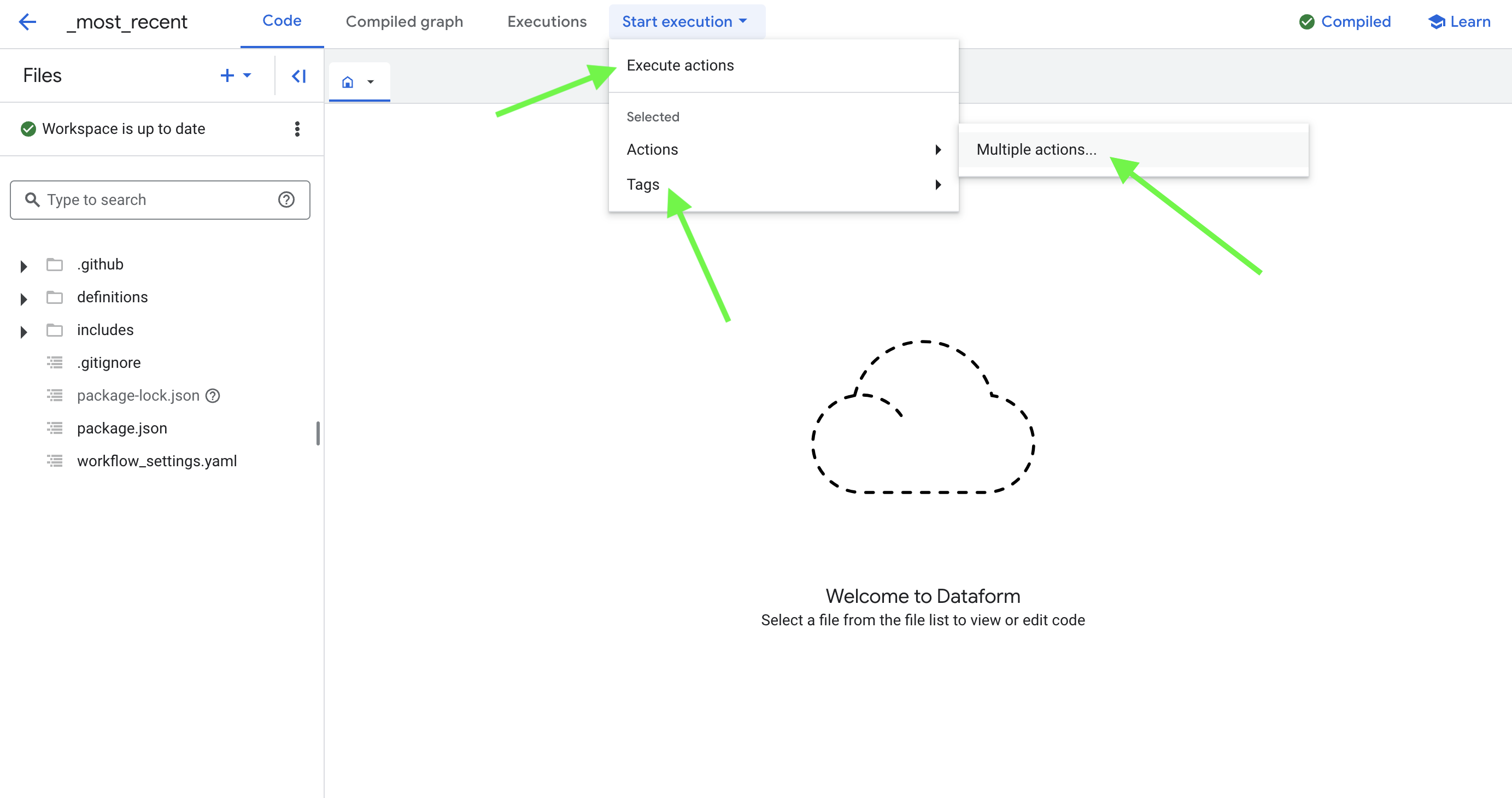
Any selection from this menu will open the same Execute side panel.
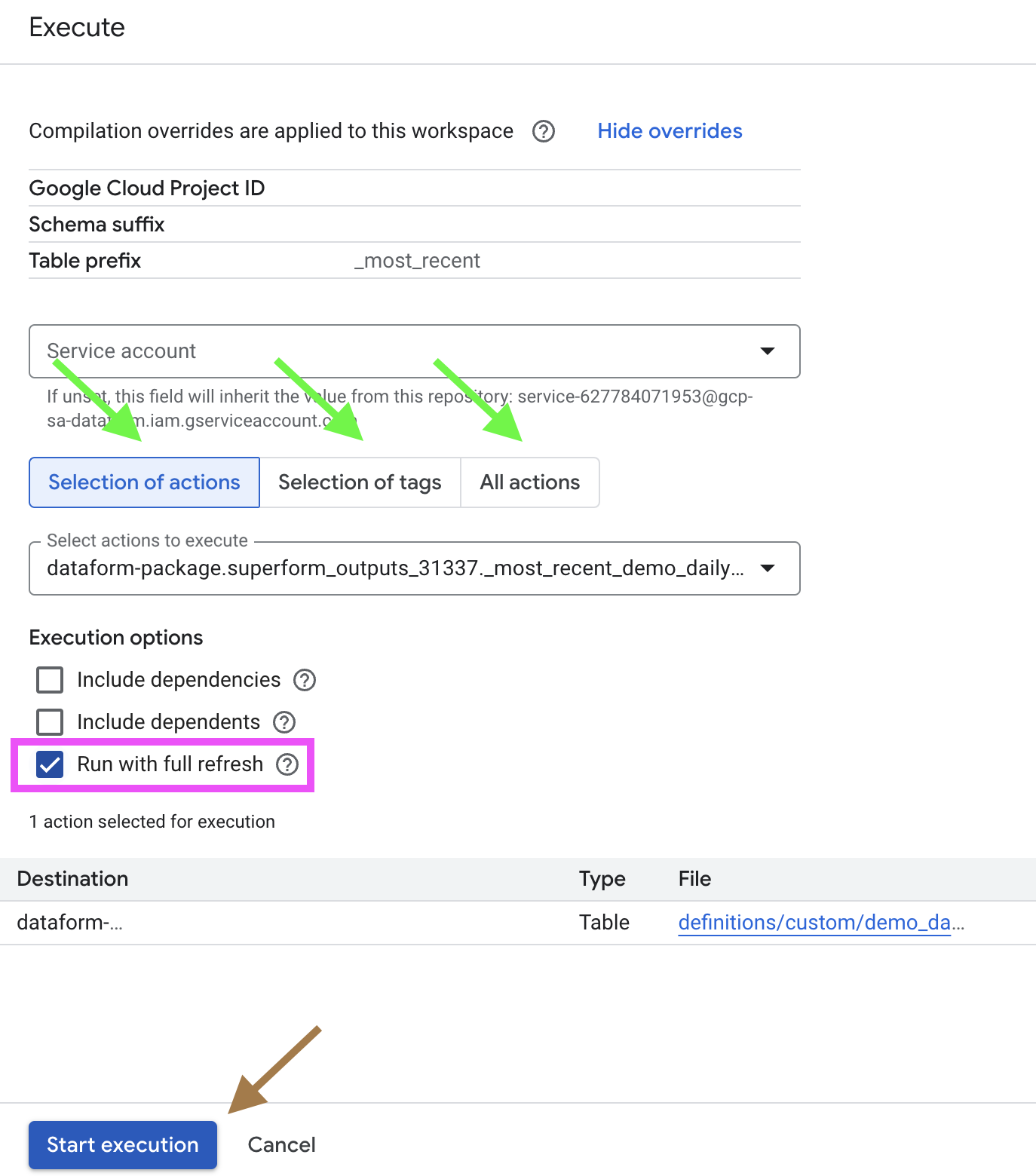
Once the side panel is open as seen in the overview:
- Select model(s) you want to rebuild using one of the three options: Select of Actions, Selection of tags or All actions
- Ensure that Run with full refresh is checked.
Run the workflow by clicking Start execution. Selected model(s) will be rebuild. Check workflow execution to track progress and verify completion.
Rebuild tables from Release configurations section
From the Release and Scheduling section, click Start execution:
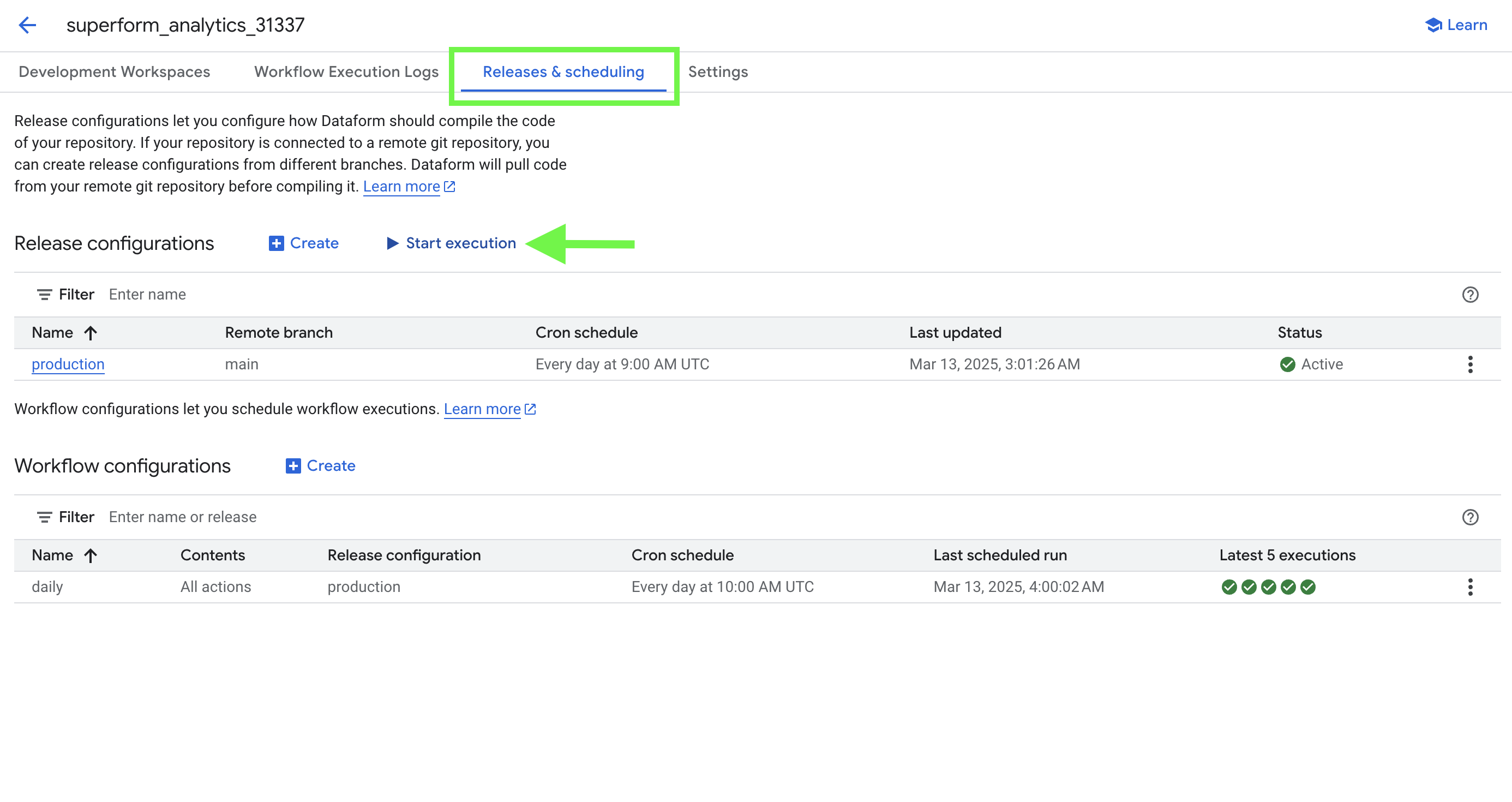
This opens the Execute manual workflow side panel:
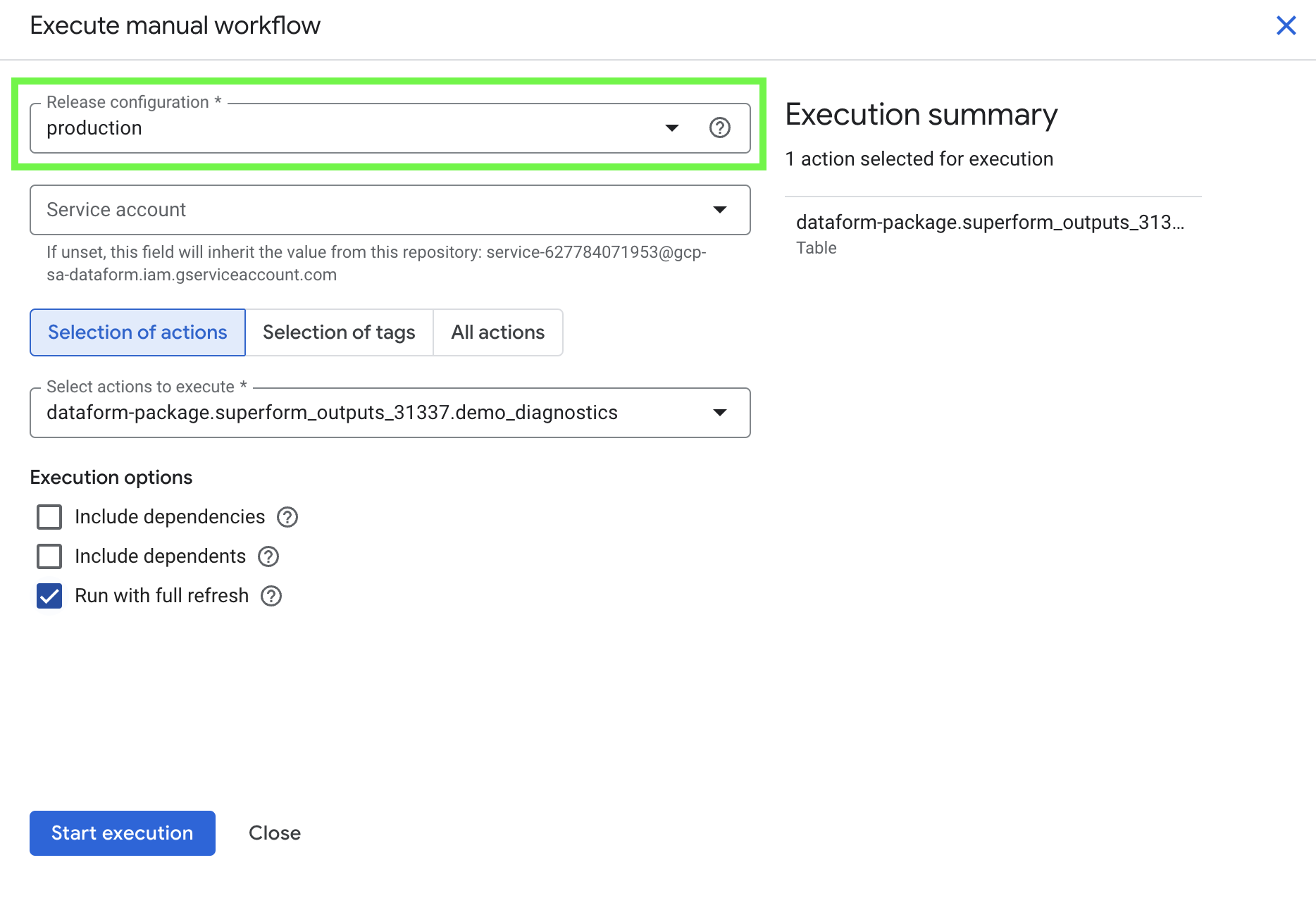
Follow these steps:
- Click Release configuration drop-down menu and choose production.
- Select model(s) you want to rebuild using one of the three options: Select of Actions, Selection of tags or All actions
- Ensure that Run with full refresh is checked.
Run the workflow by clicking Start execution. Selected model(s) will be rebuild. Check workflow execution to track progress and verify completion.
Rebuild tables from Workflow configurations
In the Release and Scheduling section, in Workflow configurations sub-category click Create:
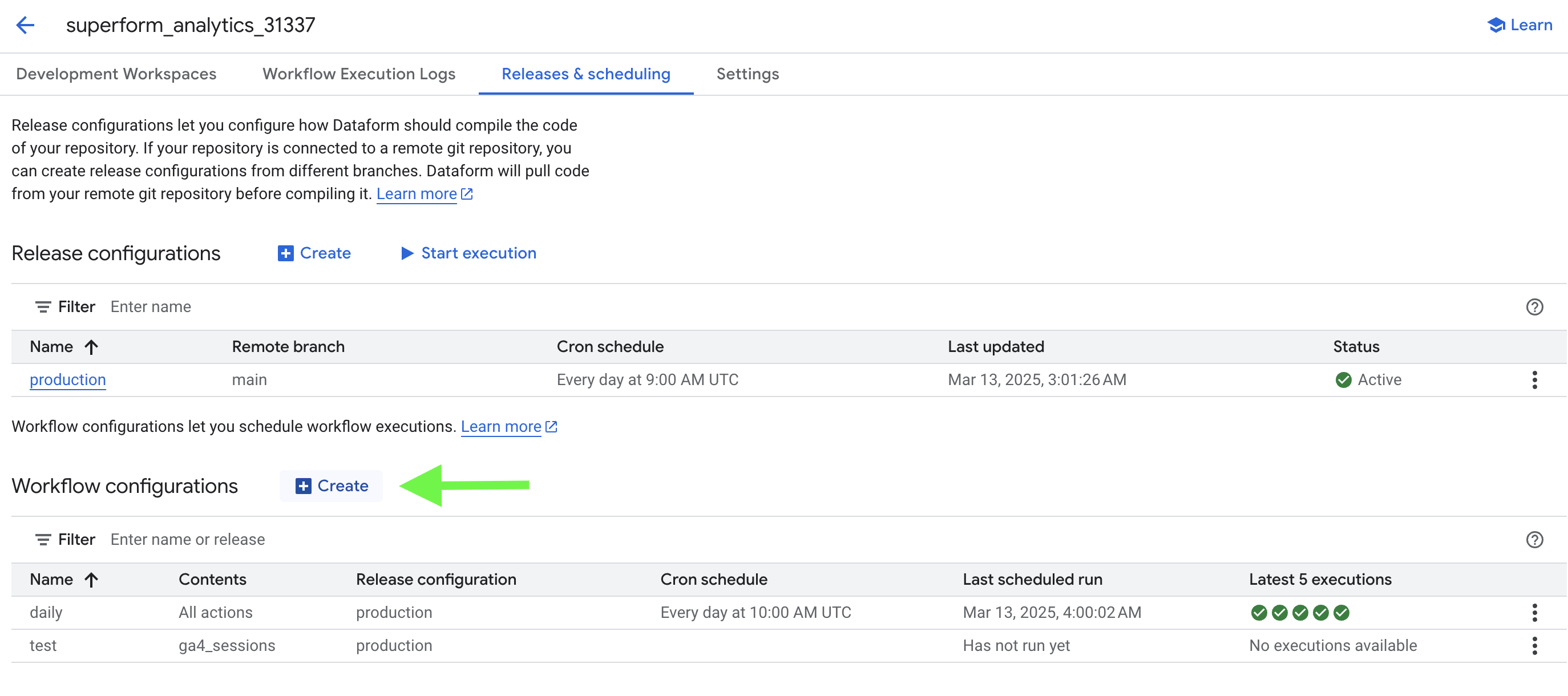
This opens the Edit workflow configuration panel:
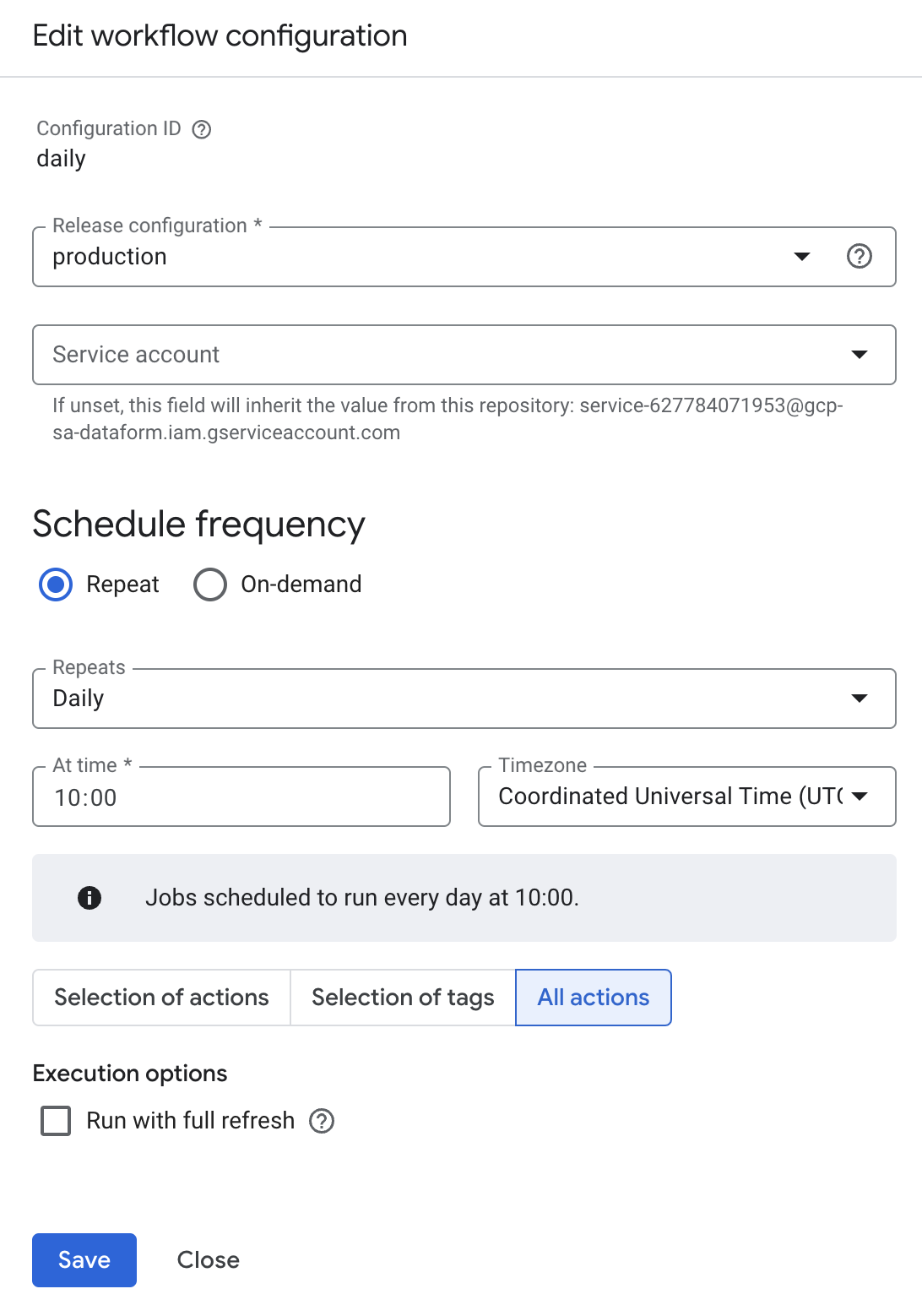
Be careful not to edit an existing workflow configuration. The GA4Dataform installer automatically creates a default workflow configuration called 'daily.' Do not modify this workflow unless you are certain of what you're doing, as changes may disrupt the daily data refresh.
The configuration process is similar to the Execute and Execute manual workflow side panels but includes additional options.
Similarities:
- Release configuration drop-down menu where you have to select production as in the Execute manual workflow
- Same way of selecting model(s) you want to rebuild - Select of Actions, Selection of tags, All actions
- Checking Run with full refresh if we want to execute a rebuild
Differences:
Schedule frequency:
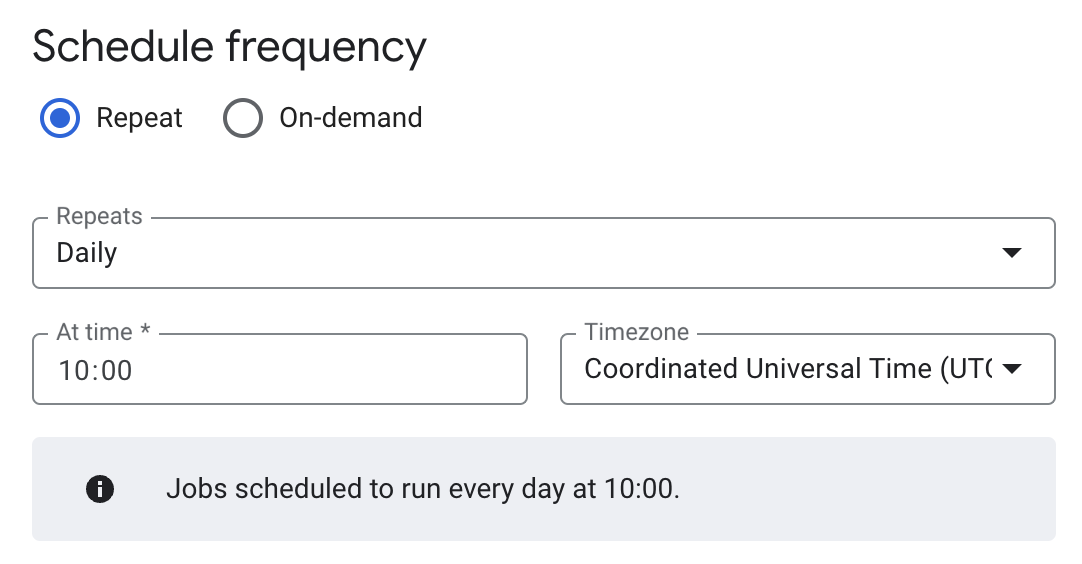
You can choose to repeat the workflow automaticaly on specific schedule or run it "On-demand." For most rebuild scenarios as explain in the introduction of this chapter, select "On-demand."
Configuration ID:
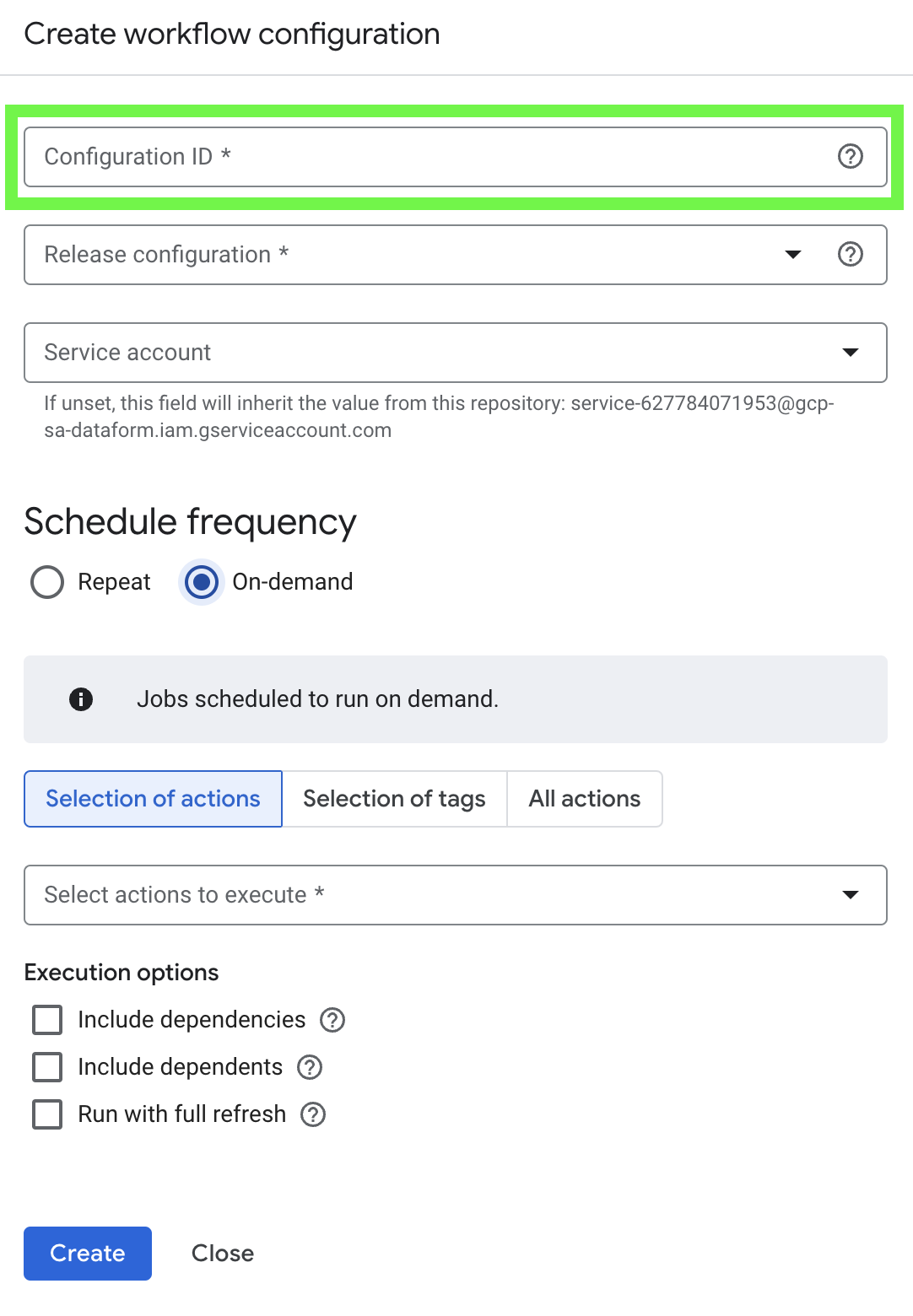
The configuration ID serves as the name of the workflow. For example, if you're creating a workflow to rebuild session tables on demand, you could name it rebuild-sessions-on-demand.
Running an On-Demand Workflow
After saving your workflow configuration, since it is not scheduled, you will need to run it manually. Click the three dots on the right of the workflow configuration and select Run now.
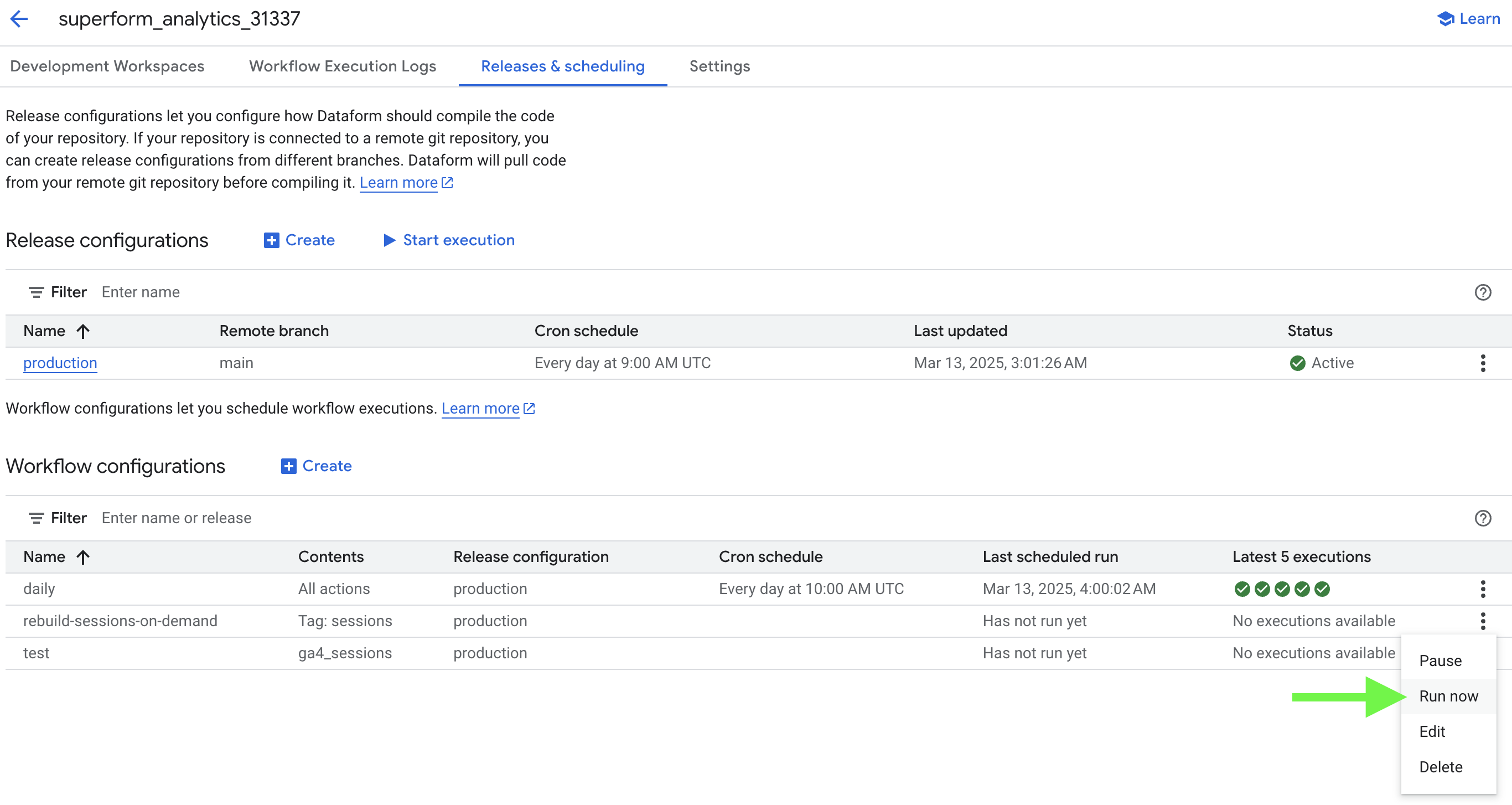
Selected model(s) will be rebuild. Check workflow execution to track progress and verify completion.
Which one should I chose?
Now that you understand how to manage table rebuilds in Dataform, here is a summary of when to use each method:
-
Execute Side Panel (Workspace Development): Best for advanced users modifying models. If you are not working in custom folders, you likely won’t need to use this option frequently.
-
Execute Manual Workflow (Release Configurations): Ideal for one-time operations. However, configurations are not saved, meaning you must repeat the steps each time you need to rebuild tables.
-
Create Workflow Configuration: Similar to Execute manual workflow but allows you to save configurations. This is useful for users with custom queries or advanced GA4Dataform usage who need to perform rebuilds frequently.